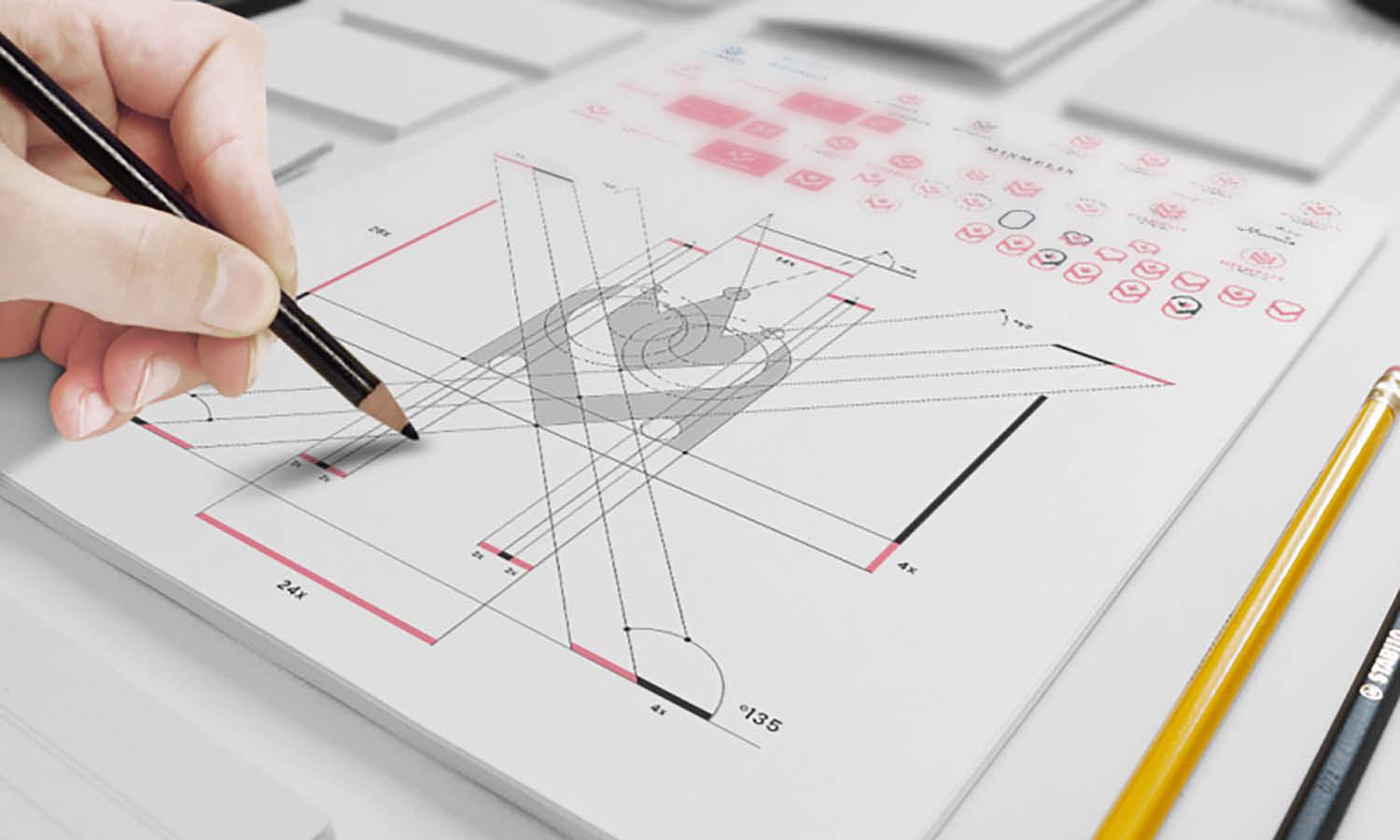The Ethical Design Principals: Comprehensive Guide

Ethical design principals serve as the foundation for responsible creativity. They ensure that user needs are prioritized without manipulation, privacy is respected, and accessibility is built into every interaction. This guide explores the comprehensive nature of ethical design, from transparency in user interfaces to mindful color choices that foster inclusivity and respect.
As professionals, we must navigate the fine line between innovation and exploitation. It is no longer enough to ask, “Can we design this?”—we must also ask, “Should we?” Understanding ethical design principals empowers designers to build solutions that are not only functional and beautiful but also human-centered and morally sound.
This guide offers insights into how to approach design ethically across different industries and platforms. Whether you're a seasoned designer or just beginning, this resource will provide a framework for making more thoughtful, responsible, and sustainable design choices.
User-Centered Design
Central to ethical design principals is the philosophy of user-centered design, which places the user at the heart of the design process. This approach not only enhances the user experience but also adheres to ethical standards by prioritizing the needs and well-being of users. A user-centered design methodology involves thorough research to understand user demographics, needs, environments, and challenges to ensure that the final product is both useful and usable.
Incorporating user feedback continuously throughout the design process is crucial. It allows designers to make informed decisions that reflect the actual needs and desires of their target audience, rather than assumptions. This iterative process ensures that the design not only solves problems but also enhances the users' quality of life without causing harm or discomfort.
Moreover, ethical design principals advocate for designing with empathy. By empathetically engaging with users, designers can create more inclusive products that cater to a broader demographic, including marginalized and underserved communities. This approach not only fulfills ethical obligations but also broadens market reach and supports positive brand recognition.
Accessibility and Inclusivity
Accessibility and inclusivity are pivotal elements of ethical design principals, ensuring that products and services are accessible to everyone, regardless of ability or background. This commitment to inclusivity means designing interfaces and physical products that are usable by people with a wide range of abilities, including those with visual, motor, auditory, and cognitive disabilities.
Adhering to established guidelines such as the Web Content Accessibility Guidelines (WCAG) and incorporating universal design principles are essential steps in creating designs that are truly accessible. These standards provide a framework for creating products that are perceivable, operable, understandable, and robust enough to work across different devices and assistive technologies.
Furthermore, inclusivity in design goes beyond accessibility to ensure that designs reflect the diversity of users in terms of culture, language, gender, age, and other sociodemographic factors. This involves engaging with diverse user groups during the research phase, considering their unique contexts and needs in the design process. It's not just about providing access but about creating experiences that are meaningful and valuable to all users.
Transparency in Design Choices
Transparency is a cornerstone of ethical design principals, necessitating clear communication about the design processes, materials used, and the sustainability of practices. This openness not only builds trust with consumers but also promotes accountability within the design industry. By being transparent, designers and companies are encouraged to make more responsible choices, knowing that their decisions will be visible and scrutinized.
Ethical transparency involves disclosing the entire lifecycle of a product—from conception to disposal. This includes honest reporting on the sourcing of materials, the labor conditions under which products are made, and the environmental impacts associated with their production and use. Designers must ensure that their work does not inadvertently support exploitative practices or harm the environment.
Moreover, transparency extends to marketing practices. Ethical design principals advocate for accurate representations of products and services, avoiding misleading claims that can deceive consumers. This level of honesty helps consumers make informed decisions aligned with their values and supports the integrity of the design profession.

Sustainability Practices
Sustainability is integral to ethical design principals, emphasizing the need to minimize environmental impact and promote ecological health through thoughtful design choices. Sustainable design goes beyond using eco-friendly materials; it encompasses a holistic approach that considers the environmental, economic, and social impacts of design decisions throughout a product's lifecycle.
Ethical designers strive to implement practices that reduce waste and energy consumption, such as using renewable resources, recycling materials, and designing for product longevity. These practices not only help conserve resources but also reduce the carbon footprint associated with production and distribution. Additionally, designing products that can be easily repaired, upgraded, or recycled at the end of their life is a key aspect of sustainable design, promoting a circular economy that supports sustainability.
Avoiding Manipulative Design Tactics
A fundamental aspect of ethical design principals is the commitment to avoiding manipulative design tactics. These tactics, often referred to as "dark patterns," are deceptive elements in the design process that trick users into making decisions against their interests, such as unknowingly subscribing to newsletters or purchasing additional items. Ethical design stands against such practices, prioritizing transparency and fairness in user interactions.
To adhere to ethical standards, designers should focus on creating clear and honest user interfaces that facilitate an understanding of the consequences of any given action. This includes using straightforward language, avoiding misleading cues or hidden terms, and providing users with all necessary information to make informed decisions.
Furthermore, ethical design principals encourage designers to respect user autonomy by offering clear choices and opting for opt-in rather than opt-out options whenever possible. This approach respects the user's freedom to make decisions without coercion or manipulation.
Cultural Sensitivity
Cultural sensitivity is crucial within the framework of ethical design principals. It involves understanding and respecting the cultural contexts of all users, avoiding stereotypes, and preventing cultural appropriation. Designers must ensure that their creations are considerate of and appropriate for diverse audiences, which enhances global accessibility and fosters inclusivity.
Ethical design mandates thorough research to understand the cultural norms and values of different communities. This research should inform design decisions, ensuring that products and services are relevant and respectful to varied cultural backgrounds. Designers should seek to engage with culture in a way that is thoughtful and enriching, rather than superficial or exploitative.
Incorporating cultural sensitivity into design practices not only adheres to ethical design principals but also avoids alienating users or perpetuating harmful biases. It enables designers to create more meaningful and universally respectful products that resonate with a broader audience, ultimately contributing to a more inclusive world.
Privacy Protection
Privacy protection is a critical component of ethical design principals, emphasizing the need to safeguard user data and ensure confidentiality. As digital platforms increasingly collect personal information, ethical designers are tasked with creating systems that protect user privacy and build trust. This involves implementing robust security measures, clear data usage policies, and transparent communication about how user information is collected, used, and shared.
Designers must consider privacy at every stage of the design process, incorporating data protection features by default. This includes using encryption, secure data storage solutions, and ensuring that privacy settings are easily accessible and understandable to users. Moreover, ethical design advocates for minimal data collection, ensuring that only necessary information is gathered and retained.
Respecting user privacy also means providing users with control over their data. This can be achieved by designing interfaces that allow users to easily manage their privacy settings and understand the implications of their choices. By prioritizing privacy, designers not only comply with legal standards, such as GDPR, but also demonstrate a commitment to ethical practices and user respect.

Design for Longevity
Design for longevity is a key principle in ethical design, promoting the creation of products that endure over time and reduce environmental impact. This approach challenges the throwaway culture prevalent in many industries, encouraging designers to think long-term about the sustainability of their creations.
Longevity in design can be achieved by using high-quality, durable materials that withstand wear and tear, thereby extending the life of the product. Additionally, designing for repairability is essential, enabling users to fix and maintain products rather than replace them. This not only conserves resources but also empowers consumers to value and care for their purchases longer.
Embracing design for longevity reflects a commitment to ethical design principals by minimizing environmental impact, promoting sustainable consumption, and creating lasting value for users. This practice not only enhances product appeal but also aligns with the growing consumer demand for sustainability and ethical responsibility in production.
Ethical Use of Technology
Ethical use of technology is a pivotal aspect of ethical design principals, ensuring that technological innovations serve the good of all users without causing unintended harm. In the digital age, designers must navigate complex ethical landscapes to develop technologies that enhance lives while safeguarding privacy and dignity. This involves deliberate considerations about the consequences of new technologies, including artificial intelligence (AI), machine learning, and Internet of Things (IoT) devices.
To implement ethical technology use, designers should adhere to principles of transparency, accountability, and fairness. Transparency involves clear communication about how technologies work and their potential impacts. Accountability requires mechanisms to address any negative outcomes or abuses of technology. Fairness ensures that technology does not perpetuate biases or discrimination but instead promotes inclusivity and equity.
Furthermore, ethical technology use involves proactive engagement with stakeholders, including users, ethicists, and regulatory bodies, to ensure broad oversight and the integration of diverse perspectives in the development process. By doing so, designers can anticipate ethical issues and innovate responsibly, ensuring that technology advances do not compromise human values but instead enhance societal well-being.
Impact Assessment
Impact assessment is an essential component of ethical design principals, requiring designers to evaluate the social, environmental, and economic effects of their work. Conducting thorough impact assessments allows designers to identify potential negative outcomes and adjust their processes to mitigate risks. This proactive approach ensures that products and services not only meet user needs but also contribute positively to the community and environment.
An effective impact assessment involves several key steps: defining the scope of the assessment, identifying relevant stakeholders, collecting data, and analyzing the potential impacts of design decisions. This process should be iterative, with ongoing evaluations to adapt and refine designs based on feedback and changing conditions.
By prioritizing impact assessment in the design process, designers uphold ethical design principals and demonstrate a commitment to creating solutions that are not only effective but also equitable and sustainable. This fosters trust and credibility with users and stakeholders, enhancing the long-term success and impact of design initiatives.
Conclusion
Ethical design principals are essential for building trust, fostering inclusivity, and creating meaningful user experiences. By incorporating transparency, empathy, and responsibility into every stage of the design process, professionals can develop products that respect user rights and support long-term well-being. These principles are not just ideals—they are practical guidelines for shaping a better digital and physical environment. As designers, it’s our duty to continually evaluate our impact and stay committed to ethical practices. Embracing ethical design principals is not only a mark of integrity but also a step toward a more thoughtful and sustainable design future.
Let Us Know What You Think!
Every information you read here are written and curated by Kreafolk's team, carefully pieced together with our creative community in mind. Did you enjoy our contents? Leave a comment below and share your thoughts. Cheers to more creative articles and inspirations!
















Leave a Comment